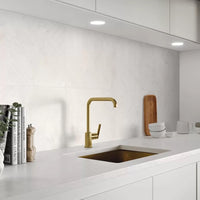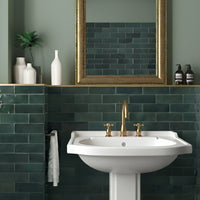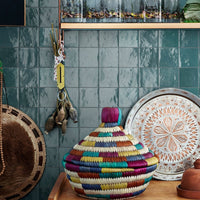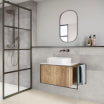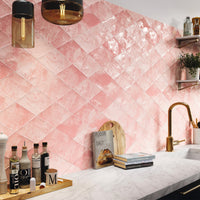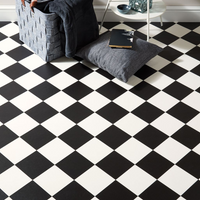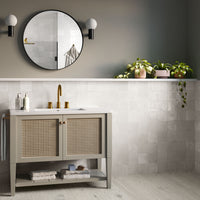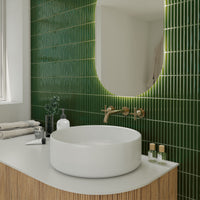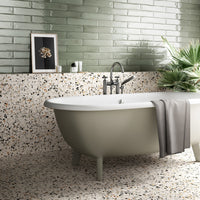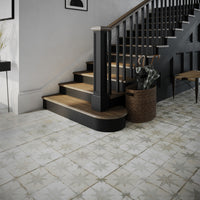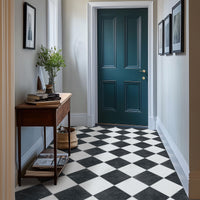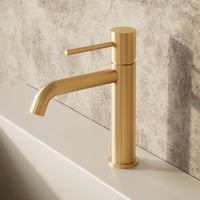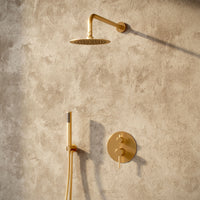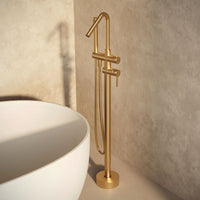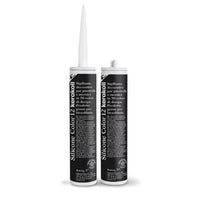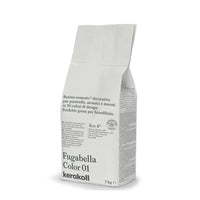When you’re considering new flooring for your home, it’s natural to compare the look, feel and cost of different materials. After all, it’s important that your new floor works with the style of your home and within your budget.
But tiles aren’t just about a pretty face. It’s also vital to think about the safety and performance in your room, especially if you have small children. This is where slip resistant tiles come in.
In this article, we’ll explain what tile slip ratings are and how you can use them to make the right choice for your project.

Why are tile slip ratings important?
As you might expect, the risk of slipping is greater in some areas of the home than in others. For example, a wet bathroom floor is always likely to be more slippery than the floor in your living area, which is likely to be dry most of the time.
And it’s a fact of life that some tiles offer more grip underfoot than others. What’s important is knowing which tiles offer more grip - and therefore, which tiles are safe to use in areas where the floor surface can become slippery.
Most tiles are tested for slipperiness and assigned a slip rating, which can help you make the right choice for your home and your family.
The different types of tile slip ratings
A number of tests are used to rate tiles for their slip resistance and there’s no direct comparison between them. While this might sound confusing, it’s actually quite helpful as the different tests measure slipperiness under different circumstances. Let’s look at the three most popular methods:
The Pendulum test
Used to test slipperiness when a person is wearing shoes or not, in wet and dry conditions.
The pendulum test is the preferred test method of the UK Health & Safety Executive. A swinging arm sweeps over a tile sample in a controlled manner - at the end of the arm is a rubber slider, which mimics a heel sliding over the floor. The more friction a tile offers, the more momentum is lost and the lower the risk of slipping.
A tile is then given a Pendulum Test Value or PTV rating, into one of three categories:
- A tile with a PTV value between 0 and 24 has a high slip potential
- A tile with a PTV value between 25 - 35 has a moderate slip potential
- A tile with a PTV value 36 or above has a low slip potential
The Ramp test
Used to test slipperiness when the subject is wearing shoes.
In the ramp test, an operator wearing rubber-soled boots stands over a platform of tiles, which are coated in oil. The platform is slowly raised at an angle and when the operator slips, the angle is noted.
This angle then determines the ‘R Rating’ for a particular tile, which runs from R9 to R13.
- Tiles with an R9 rating provide minor slip resistance and should be used in dry internal areas, such as dining rooms and kitchens.
- Tiles with an R10 rating provide moderate slip resistance and are suitable for bathroom floors.
- Tiles with an R11 rating provide good slip resistance and can be used in all internal areas including wet rooms and can also be used outside.
Tiles with an R12 or R13 slip rating are the least slippery when wet and are best-suited to commercial applications.
The Barefoot Ramp test
Used to test slipperiness when a person is not wearing shoes.
The barefoot ramp test is performed in the same way as the normal ramp test, except that the operator is barefoot and tiles are coated in water. Tiles are classified as A, B or C and the test is useful for determining suitability for use in wet areas and commercial swimming pools:
- Tiles with an A rating are suitable for a barefoot hallways and changing rooms.
- Tiles with a B rating are suitable for showers and pool surrounds.
- Tiles with a C rating are suitable for steps leading into swimming pools.
Which tiles are right for me?
When it comes to domestic properties, slip ratings are intended as a guide as there’s no actual requirements for particular rooms. Therefore, you should always consider the floor you’re looking to tile and whether you’ll be wearing shoes or not.
For example, while a tile with an R10 is preferred for a bathroom, you may prefer to use a tile with an R9 rating. In this case, we would advise taking other precautions against slipping, such as using a bathmat to soak up any water.
In a dry internal area, such as a living room, you can use a tile with an R9 slip rating as the area is unlikely to get wet. However, if this tile was to run through into your kitchen, you may wish to use a tile with a higher slip rating.
Which tiles should I use outside?
As we have a wet climate in the UK, we recommend that only tiles with an R11 finish or higher are laid outside. All our 20mm outdoor tiles achieve this rating.
Are slip-resistant tiles rough?
While it's natural to assume that tiles with a higher degree of slip resistance will have a rough texture, this isn't always the case. Thanks to improvements in glaze technology, some tiles now have a smooth surface but achieve a higher slip rating than expected, such as our Pietra Beige and Grey floor tiles.
Other things to consider
It's important to keep your tiles clean and dry. If your floor tiles are dirty, oily or wet, the possibility of slipping on them is increased, as the surface of the tile will offer less friction.
Understanding tile slip ratings can be tricky, so if you require any further information on choosing the correct tiles for your home, please contact us and we'll be happy to advise. If you are tiling a commercial premises, we advise contacting us for confirmation that a tile is suitable for the intended location.
